What is a “Gut” Renovation?
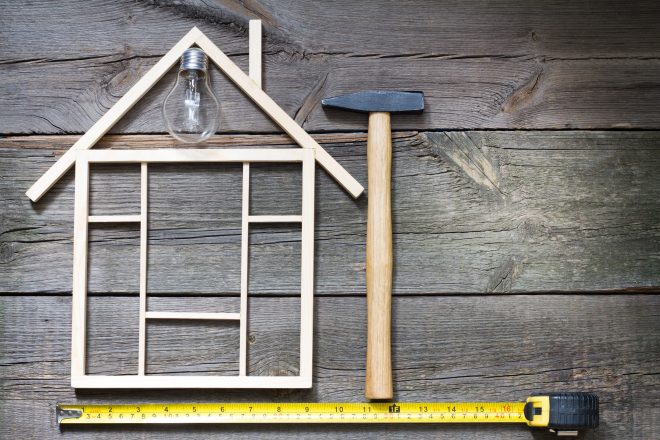
“Gut” renovations are a dramatic and comprehensive form of remodeling, often seen in real estate scenes with a sizeable percentage of older builds—like New York City. Unlike simple makeovers or cosmetic upgrades, a gut renovation involves stripping a property down to its bare bones—think walls, floors, and sometimes even the structural elements—and rebuilding it from scratch. This process offers a unique opportunity to customize a space according to contemporary tastes and needs while maintaining the building’s original charm and character.
Understanding the Scope
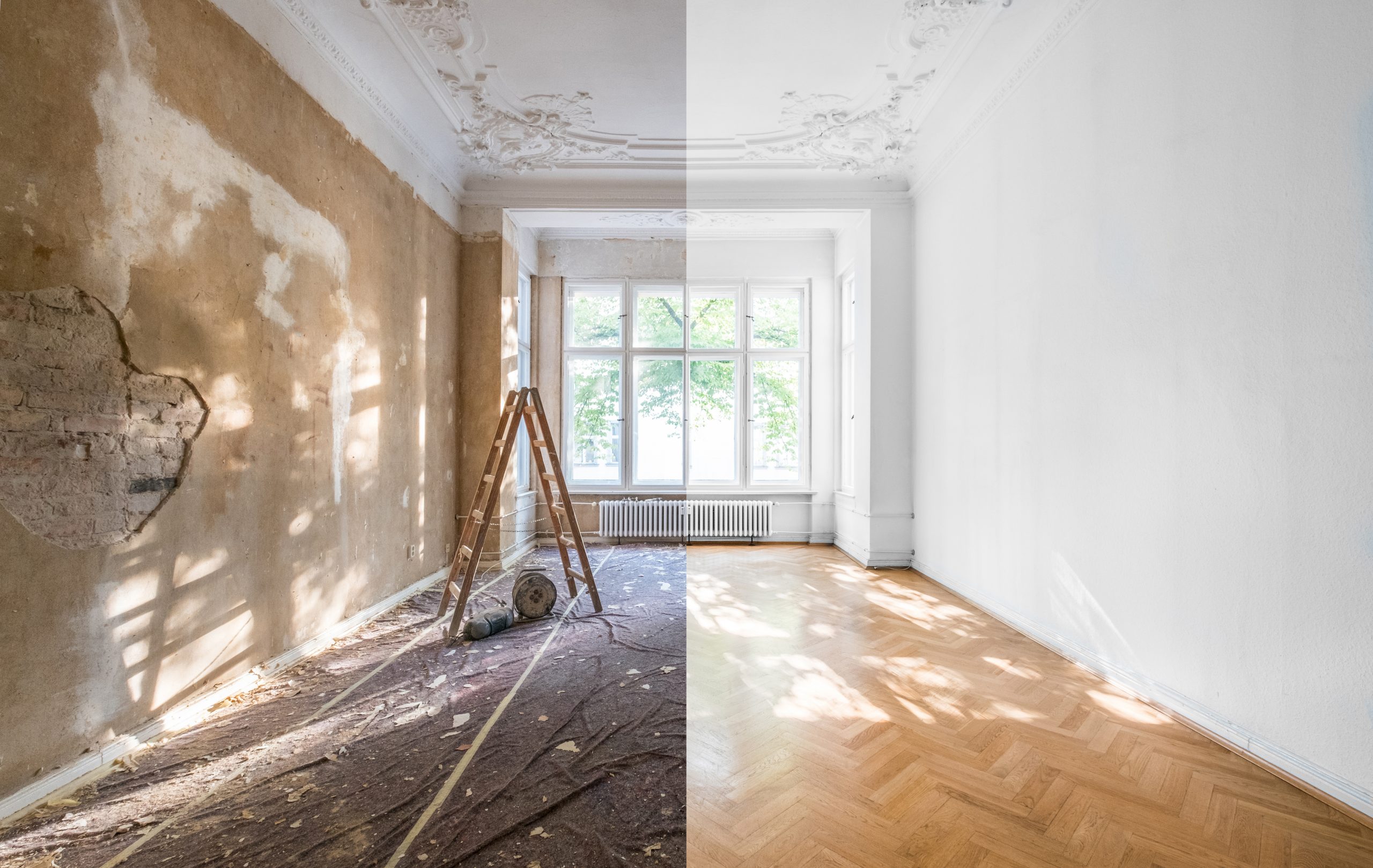
At its core, a gut renovation is a total overhaul. It typically involves significant structural changes, including reconfiguring layouts, replacing old plumbing and electrical systems, and sometimes altering the building’s facade. This level of renovation is especially popular in NYC, where older buildings often need substantial updates to meet modern living standards and efficiency.
Why Choose a Gut Renovation?
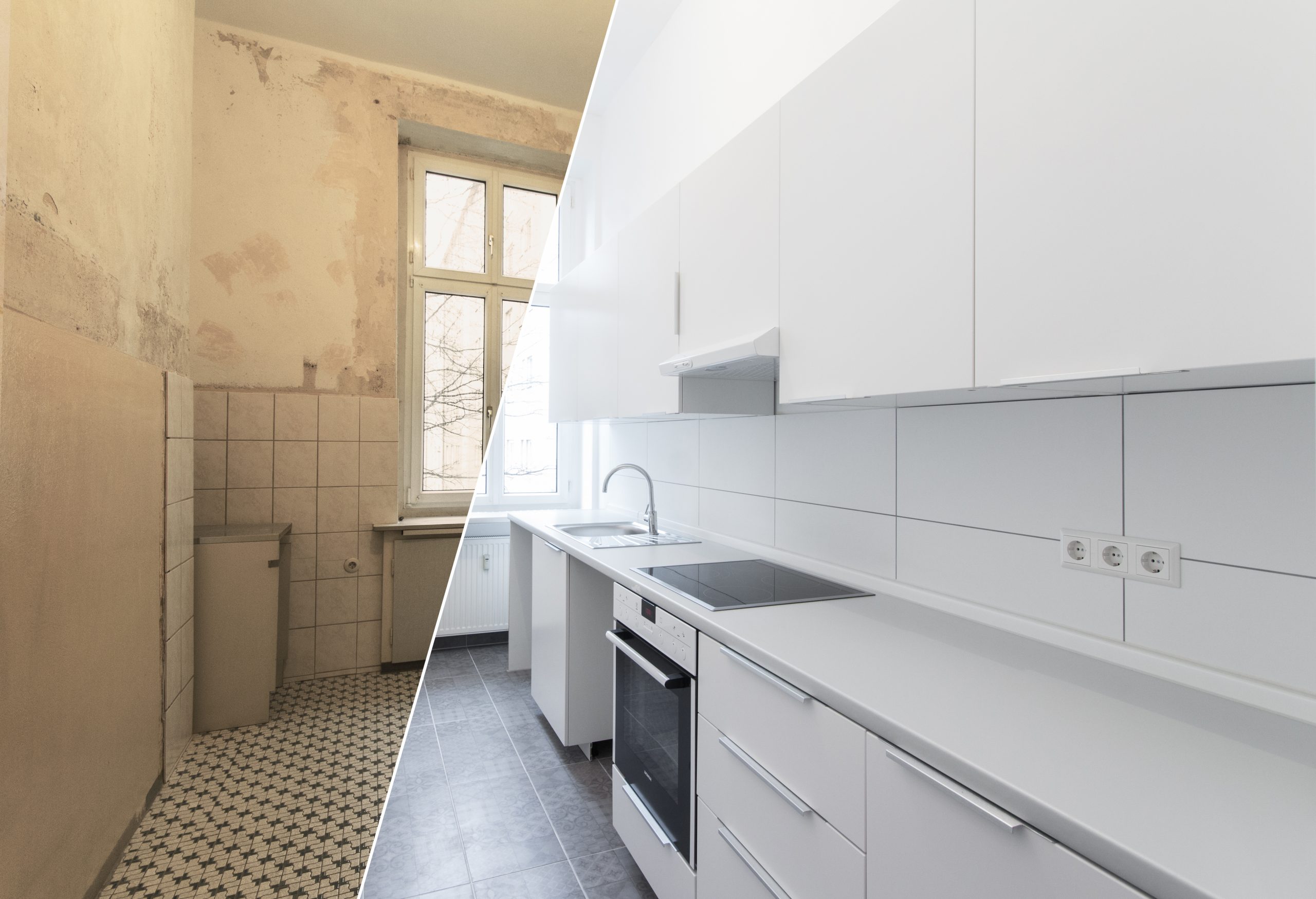
Gut renovations represent a significant undertaking. Homeowners and investors opt for such extensive renovations for several compelling reasons, each reflecting a blend of personal preference, practicality, and long-term planning.
Customization and Personalization
The most striking advantage of a gut renovation is the unparalleled level of customization it offers. In a city where space is at a premium, and individual tastes vary widely, gut renovations provide an opportunity to tailor a property to exact specifications. Homeowners can redesign layouts to suit their lifestyle, whether it’s creating an open-concept living space, adding home offices, or crafting bespoke kitchens and bathrooms.
This process allows for the incorporation of unique design elements, such as custom-built cabinetry, state-of-the-art appliances, and high-end finishes. It also opens up possibilities for incorporating smart home technology, enhancing both the functionality and modernity of the space. For those who have a clear vision of their dream home, a gut renovation is the path to realizing it in every detail.
Addressing and Rectifying Structural Issues
Older properties in New York, especially those in historic districts, often harbor hidden structural issues. These can range from outdated plumbing and electrical systems to foundational weaknesses. A gut renovation allows for a thorough examination and rectification of these problems.
By stripping a building down to its core, contractors can identify and address issues that might otherwise remain hidden, such as water damage, mold, or structural decay. Updating old plumbing and wiring not only ensures the building meets current safety standards but also enhances its functionality and efficiency.
This comprehensive approach to renovation ensures the longevity of the property, securing the investment for the future.
Enhancing Energy Efficiency
With growing awareness of environmental concerns and the rising costs of energy, efficiency has become a critical consideration. Gut renovations offer the perfect opportunity to integrate energy-efficient solutions into a building’s design. This can include the installation of high-efficiency HVAC systems, LED lighting, energy-star rated appliances, and improved insulation.
Upgrading windows and doors for better thermal performance not only reduces energy consumption but also enhances the comfort of the living space.
These improvements can lead to significant cost savings in the long run, reducing utility bills and potentially increasing the property’s appeal to environmentally conscious buyers.
Adding Value to the Property
In the competitive NYC real estate market, a gut-renovated property can stand out significantly. Such extensive renovations often lead to a substantial increase in a property’s market value. A modern, efficient, and structurally sound property is more appealing to potential buyers, commanding a higher price point.
Additionally, a gut renovation allows for the incorporation of contemporary design trends and luxury amenities that are highly sought after in the market. This can be particularly advantageous for investors or homeowners looking to sell in the future. The upfront cost of a gut renovation, though substantial, can be seen as an investment in the property’s future marketability and resale value.
The Challenges of Gut Renovations in NYC
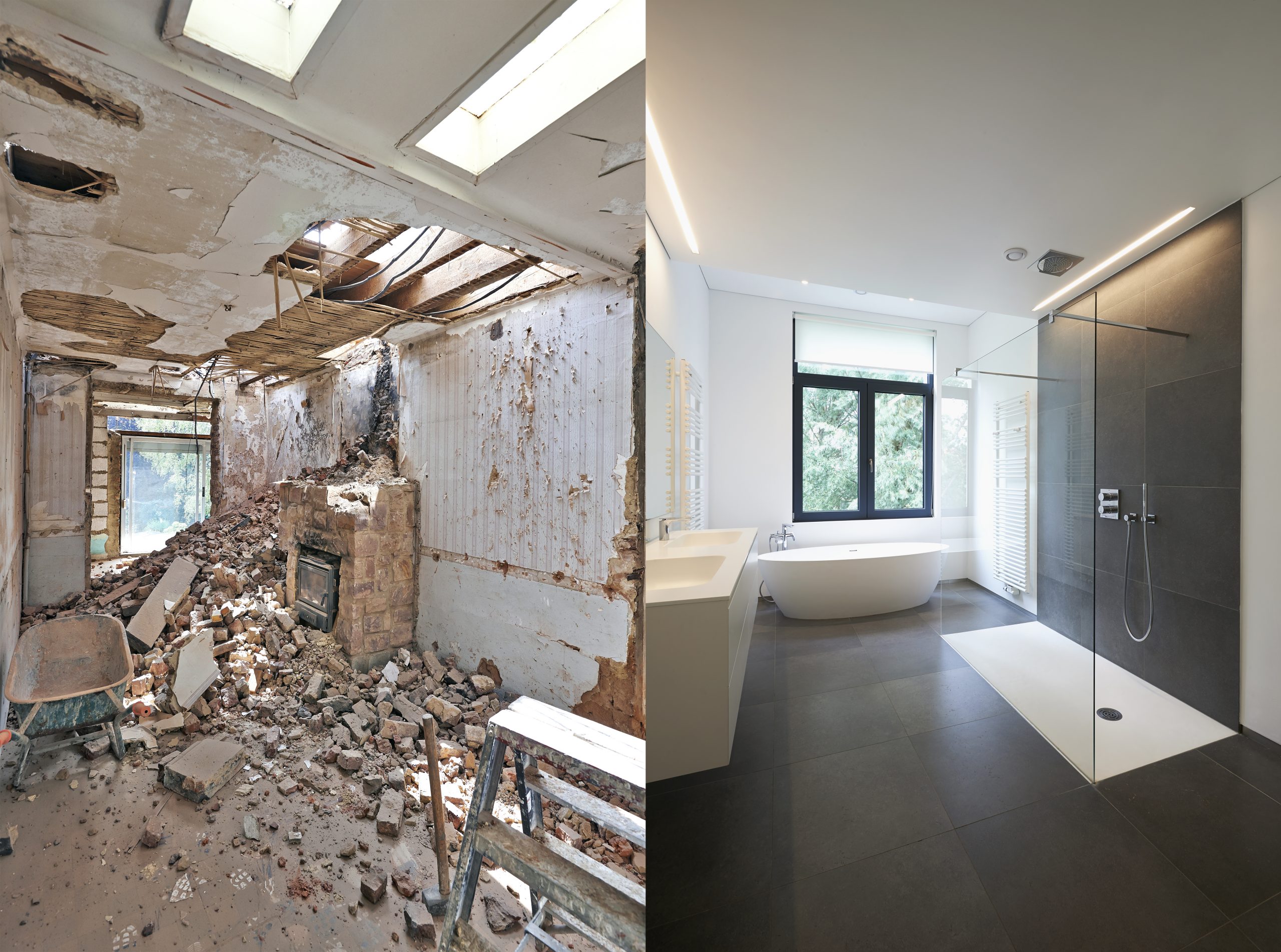
Embarking on a gut renovation is no small feat. The process, while rewarding, comes with a unique set of challenges. These hurdles can test the resolve of even the most experienced property owners and investors. Let’s delve deeper into these challenges to understand the complexities involved in undertaking a gut renovation.
Financial Considerations
The cost of a gut renovation can be daunting. The expenses go beyond just the physical work; they include architect and designer fees, permits, and unexpected costs that inevitably arise during such extensive projects. The nature of the buildings in NYC, often older and with historical significance, can lead to higher restoration costs, especially if preserving certain architectural elements is required.
Additionally, labor and materials in New York tend to be more expensive compared to other regions, significantly driving up the overall budget. Homeowners must also consider the cost of temporary housing during the renovation, as living in the property during a gut renovation is typically not feasible.
Time Constraints and Delays
Time is a critical factor in gut renovations, and these projects often take longer than initially expected. Delays can stem from various sources, such as the discovery of unforeseen structural issues, delays in material deliveries, or extended periods required to obtain necessary permits and approvals.
In NYC, where coordination with various city departments and adherence to strict building codes is required, these delays can be even more pronounced. For homeowners eager to move in or investors looking to sell or rent the property, these delays can be frustrating and costly, impacting the overall timeline of their plans.
Navigating Regulatory Requirements
New York City is known for its complex building codes and regulations, especially in historic districts or landmarked buildings. Navigating these regulations requires significant expertise and often the assistance of experienced professionals. The process of obtaining the necessary permits and passing inspections can be lengthy and complicated.
In some cases, proposed renovations may face restrictions based on the building’s historical status or community zoning laws, requiring redesigns or adjustments to the original plan. For those renovating in co-op or condo buildings, additional layers of approval from the building’s board may be necessary, adding further complexity to the process.
Planning a Gut Renovation

Planning a gut renovation requires meticulous attention to detail, foresight, and a comprehensive understanding of the project’s various facets. This phase is critical in ensuring the renovation process is as smooth and efficient as possible.
Budgeting: Establishing and Managing Finances
Budgeting for a gut renovation is more than just accounting for construction costs. It involves a holistic view of all expenses, including professional fees, permits, materials, and unexpected contingencies. In NYC, where costs can escalate quickly, having a well-planned budget is essential.
It’s advisable to set aside a contingency fund, typically 10-20% of the total budget, to cover unforeseen expenses. Regularly reviewing and updating the budget throughout the project is also crucial to avoid overspending. Engaging a financial advisor or an experienced contractor can help in creating a realistic budget and provide insights into potential cost-saving measures without compromising the quality of the renovation.
Hiring Professionals: Architects, Contractors, and Designers
The success of a gut renovation largely depends on the team behind it. Hiring experienced professionals is imperative. Architects and designers play a crucial role in translating vision into reality while ensuring compliance with building codes and regulations. A reliable contractor is essential for managing the construction process, coordinating with subcontractors, and ensuring quality workmanship.
In NYC, where renovations often involve complex regulatory hurdles, professionals with local experience are invaluable. They can navigate the city’s unique challenges, from obtaining permits to managing logistics in densely populated areas. It’s important to conduct thorough research, check references, and ensure that the professionals hired have a track record of successfully managing gut renovation projects in the city.
Design and Planning: From Vision to Blueprint
The design and planning stage is where dreams and practicalities converge. This involves detailed discussions with architects and designers to finalize the layout, select materials, and plan the functionality of each space. In NYC, where space is at a premium, efficient use of every square inch is crucial. This stage also involves making key decisions about aesthetic elements, from color schemes to finishes, ensuring they align with personal tastes and the property’s character. Incorporating elements like sustainable materials or smart home technology can also be considered during this phase. Detailed blueprints and 3D renderings can help visualize the end result, ensuring all stakeholders are aligned with the vision for the property.
Execution: From Demolition to Completion
The execution phase is where planning meets reality. It begins with demolition, followed by structural, electrical, and plumbing work, and finally, the finishing touches. This includes coordinating with various tradespeople, managing material deliveries in a city known for its logistical challenges, and ensuring work is completed to the highest standards.
Regular site visits and meetings with the contractor and design team are essential to monitor progress and make timely decisions. Flexibility is crucial, as unexpected issues often arise during construction. Effective communication among all parties involved is vital to address these challenges promptly and keep the project moving towards its successful completion.
The Rewards
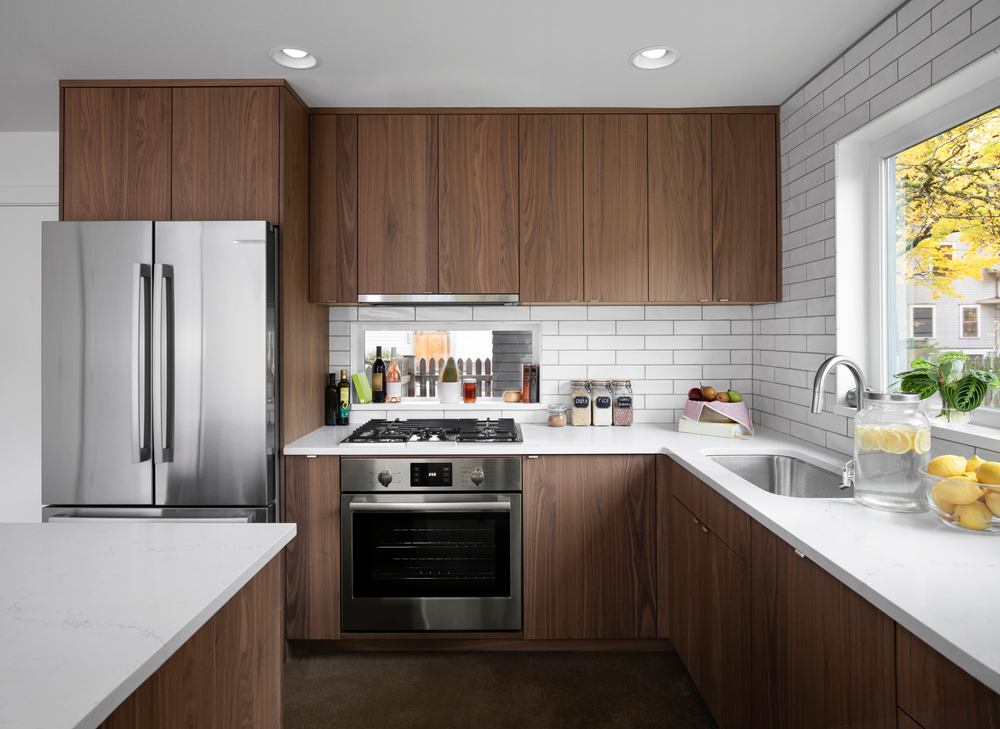
Despite the challenges, a gut renovation can be incredibly rewarding. At the heart of it lies the transformation of an outdated or inefficient space into a modern, personalized haven. This process not only rejuvenates the property, bringing it in line with contemporary standards of comfort and aesthetics but also preserves its unique character, especially important in historic neighborhoods.
For the homeowner, there’s the deep satisfaction of seeing a vision come to life, a space crafted to meet their specific needs and tastes. For investors, the reward is tangible in the enhanced market value and appeal of the property. Ultimately, a successful gut renovation represents a reinvention of living spaces, aligning them with modern lifestyles while respecting their historical essence.
- Categories:




